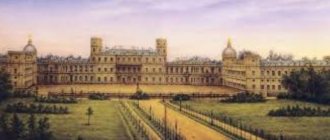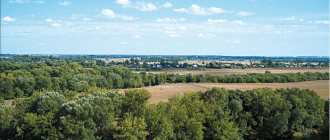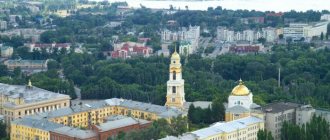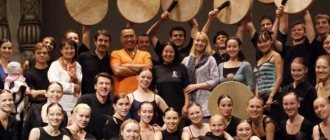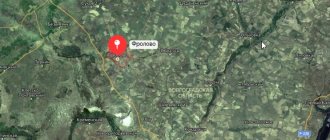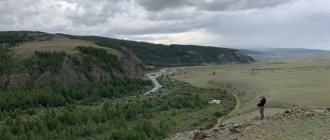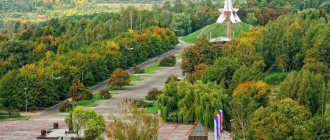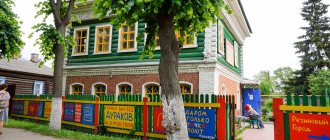The small provincial town of Tutaev (Romanov-Borisoglebsk) in the Yaroslavl region is included in the Golden Ring of Russia. It is famous for its miraculous icons, picturesque landscapes, and museums. A special place formed along the Volga is famous for the presence of a large number of cultural heritage monuments. Interestingly, the banks of the river are not connected to each other by a bridge.
The settlement is divided into two sides - Romanovskaya and Borisoglebskaya. They are connected by ferry, the schedule of which must be clarified before the trip. In winter, you can get to the other shore on ice. You can also take a detour by car. You will need to cover about 40 kilometers one way. Tutaev is famous due to the abundance of ancient temples of the 18th century.
The streets are cozy, and at every corner you will find an interesting object worthy of attention. First of all, take a walk in the center, there are streets such as Ave. 50th anniversary of the Victory, Proletarskaya, Komsomolskaya. To avoid getting lost, use a map with house numbers.
Tutaev City Day is celebrated on August 4. Many people ask how old the city is. It recently celebrated its 735th anniversary. The city day program is always intense, artists come and fairs are organized. The population happily welcomes guests, tourism is thriving.
Brief history
The settlement did not always bear this name. Tutaev (Romanov-Borisoglebsk) was renamed not by chance. Previously, two completely different settlements were actively developing here. Romanov was on the left bank, and Borisoglebsk was on the right. The foundation of the right bank district is associated with the name - Roman Vasilyevich. It was a defensive fortress from the 18th century. Soon another hail appeared on the opposite bank. It acted as a fishing settlement. In 1822, a decision was made to unite the settlements. Alexander I did this for economic reasons.
In 1918, a new government came and wanted to change the name. Many options have been proposed. But I liked the name “Tutaev” more than the others. It has been established for a long time and remains unchanged for hundreds of years. From time to time the question of returning the historical name arose, but no one supported it. In the old days the city had a hilly “Swiss landscape”. Unfortunately, most of the churches with golden crosses have been destroyed. Many objects are under restoration.
House of the merchant Vagina
In the historical part of the city, on the right bank, in the middle of the 19th century, a building appeared that belonged to the merchant Vagin. The building has not changed since then, either inside or outside. Now there is a museum in the merchant mansion, where you can learn about how they lived in those days, what floors, stoves, and utensils were like, that is, you can plunge into the real merchant atmosphere of the past. The museum is located on Lunacharsky Street, 38/25. A visit with a guide costs 330 rubles, an independent inspection of the exhibition costs 45 rubles.
How to get there?
regularly conducts trips to the cities of the Golden Ring of Russia.
Travel from Kazan
Travel from Cheboksary
Travel from Yoshkar-Ola
The Tutaev Culture and Tourism Center (Romanov-Borisoglebsk) is in demand among vacationers. You can come here on your own or choose a thematic excursion. An experienced guide will tell you many interesting historical facts and reveal the secrets of historical events of antiquity. Hiking is popular. This type of leisure is chosen by those who value a calm and peaceful atmosphere. The local landscapes are beautiful, there is a lot of vegetation and plantings.
You can get to Tutaev using a comfortable bus. Dispatch is made from the Shchelkovo bus station. The drive will take 6-6.5 hours. Check the Yaroslavl-Tutaev bus schedule in advance. If you need a faster option, you can use a personal car. Driving along the M-8 highway.
Spaso-Arkhangelsk Church
At 4 Arkhangelskaya Street, the oldest temple in the city has been preserved. This is a two-story, five-domed building.
It was erected back in 1751. Initially, the church had a name - Mikhailo-Arkhangelskaya, but the temple received its modern name in 1854 and so it stuck with it.
A huge icon of the Savior has been preserved in the church. Local residents claim that this work was done by Prilutsky’s student, Dmitry.
Hotels and restaurants
Hotels offer a limited selection to guests. But there are hotels here where you can stay with all the amenities. As for catering, the choice of canteens and cafes is small. But the food tastes great and is prepared only from environmentally friendly products. Local baked goods are sold on the streets.
There are many libraries and cultural institutions in the city - a youth library, a palace of culture, a centralized regional library, a library named after. N. N. Nosova and others.
Population of Tutaev
The development of the city has always been under strong pressure from the nearby regional center - Yaroslavl. The population of Tutaev was first determined in 1856, then 5,100 people lived in the town. According to the first census of the Russian Empire, held in 1897, there were already 6,700 inhabitants. In the pre-revolutionary period, the population grew slowly, mainly due to natural increase.
After the 1917 revolution, the population of Tutaev (according to the first available data from 1931) almost doubled to 7,600, compared to the last data of the Russian Empire in 1913. In the period from 1931 to 1939. The number of city residents grew to 18,500, the population growing due to the influx of rural population during the period of Soviet industrialization. The next surge in the population increase in Tutaev occurred in connection with the construction of a motor plant, which for a long time determined the economic and demographic situation in the city. The population reached its maximum in 1996, reaching a population of 45,700 people. In recent years (since 2015), the number of residents has been growing slightly; now 40,400 people live in Tutaev.
Sights of Borisoglebsk, right bank
The leading attraction of the central side is the Resurrection Cathedral , where the icon of the All-Merciful Savior of Miracles is kept. This is the most famous icon of Tutaev. Even in the temple the floor was worn down by the knees of the believers. Two stripes appeared. Hence, people say that this is an icon that people “crawl under.” It helps to cope with illnesses and troubles.
The 18th century structure was previously made entirely of wood. It became a stone building in 1652. The temple is characterized by its large size and rich external and internal decoration. This is the main decoration of the historical area of the district. Nearby you will see a cozy church with two porches, a beautiful bell tower and the Holy Gates. The exquisite facades deserve special attention. They are framed with tiles. Window trims complete the overall picture.
The interior is similar to the layout and design of the Russian Orthodox Church and is in no way inferior to it in beauty. The painting of the walls was done using an artel brought from Yaroslavl. On the walls you can see the events of the Last Judgment, the construction of the Tower of Babel, the life of Adam and Eve and much more. This is a real museum of Russian art of the 17th-18th centuries. The majestic iconostasis covered with gold attracts attention.
The main shrine of the monastery is the image of the All-Merciful Savior from the 15th century. This is an exclusive property. Dionysius Glushitsky (1363-1437) worked on its creation. The face has been kept in the cathedral for several centuries. Perhaps this is the largest icon in Orthodoxy. Its height reaches three meters. Every year a religious procession is held with the image.
The shrine is melted through the water to the other side, and then returned to its place. It’s interesting that you can clearly see this action by admiring the painting by Boris Kustodiev.
If you come to Tutaev, then be sure to visit the Resurrection Cathedral in the Yaroslavl region. Behind the temple there is a small staircase, which is directed downwards. It leads straight to the river. From there you can see an unusually beautiful view of the opposite bank - the golden dome, the roofs of the houses. If you follow the descent, you will find yourself on a sandy beach. Unfortunately, no one has been looking after the embankment for a long time. A little further you will find a pier. From here a ferry departs every 60 minutes. If you wish, you can rent a private boat and take a walk on the water surface. You will be able to see the city of Tutaev from an unusual angle.
The Annunciation Church was built under the guidance of capital craftsmen in the 1660s. This is a small temple that is loved by the locals. Its condition is dilapidated and is currently undergoing a cycle of restoration measures. Behind the shrine there is a memorial dedicated to internationalist soldiers. Entrance to the territory is free.
Visit the exhibition center of Admiral F. F. Ushakov . The object is located on Lunacharsky Street, 43. He was a famous naval commander who made a significant contribution to the development of his native land. This will be a fascinating excursion. If you wish, you can show dexterity by knocking out a bottle for yourself using a sea bell and tying a real sea knot.
On the right coast there is a beautiful, small park area. The Soviet-era square is quiet. Here you can take a leisurely stroll. Plaster statues are installed everywhere, and there are busts of Stalin and Tutaev (a famous Red Army soldier). If you walk a little further, you will see a parking lot with vintage cars.
The Tutaevsky Motor Plant is in high demand among visitors, as it is famous throughout the country. The company specializes in the manufacture of power units with a reliable and modern design. The plant in Tutaev appeared in 1968. Product production began in 1973. We sell high-quality engines for various heavy equipment, gearboxes and spare parts. In addition, the company specializes in equipment maintenance.
If you are thinking about what else is interesting to see in Tutaev, then do not pass by the famous museum “Borisoglebskaya Side” . The building is located at st. Lunacharskogo, 40. The ticket price is low (100 rubles), but you will get a lot of impressions. After all, the exhibitions here are presented in a variety of areas.
The largest exhibition is dedicated to the theme “The Royal Sheep”. So, they once called the Romanov sheep, which acts as a kind of symbol of the region. Walking through the halls, you can look at various products - vests, fur coats, mittens, hats, etc. The main character - a sheep with lambs - is installed in the very center. The guide will tell you about the characteristics of these animals and their habits. You will learn the secrets of peasant rituals, interesting beliefs, get acquainted with the genealogy of famous traders and a lot of interesting things about the ancient life of townspeople.
Thus, if you want to get a complete picture of the trip, it is recommended to visit this complex. Photographs are permitted.
Church of Tikhon of Amafuntsky
On Tolbukhin Street in the depths, you can see a small temple. It was erected in 1914, from red brick according to the design of M. Barenkin. This is an Old Believer church on the 1st floor, with large window openings. The bell tower of the church is tent-shaped.
In 1936, the temple was closed and an archive was placed in it, which is why the building is so well preserved.
Sights of the Romanovskaya side, left bank
The oldest architectural monument of the city is the Cathedral of the Exaltation of the Cross . It represents the beginning of the entire history of the settlement. Once upon a time, the white stone church was made entirely of wood. At this place there was a temple in the name of the Exaltation of the Holy Cross. The shrine was located on a hilly area, surrounded by steep slopes of the coast.
In 1658, it was decided to erect a new building. Metropolitan Ion Sysoevich took an active part in this process. The painting of the porch was done with the participation of Kostroma icon painters and Russian artists. Today, the 18th century frescoes are in poor condition and require restoration. A large proportion of the shrines have already been lost, the remaining ones are also under threat. Every guest can visit the holy place. Divine services are held regularly.
If you walk further along the ornate road, you will see the Zatsepin estate . The 19th-century building currently serves as a museum. There is a sheepfold and a small hotel here. Those who want to take a break from the bustle of the city often come here.
Also nearby you can see the Transfiguration-Kazan Church . It is distinguished by a large hipped bell tower equipped with eight sides. This is a beautiful building that serves as the face of the ancient town. The building, built in 1758, previously stood near merchant ships. It decorated the main state entrance. In the building itself you will see two churches. In the lower part there is the Kazan Church, and in the upper part there is the Transfiguration Church.
A small mansion has recently appeared behind the shrine. There is a museum here called “House on Novinskaya” . Most of the exhibition halls are dedicated to the history of the development of the provincial bank. There are old safes, counting instruments and much more on display. There is even an entire room, the interior of which copies a traditional banker’s apartment. There is a special, mysterious atmosphere around. Ticket price – 150 rubles.
The road then leads to a square with a 19th-century fire tower . If you have watched Leonid Gaidai’s film “The Twelve Chairs,” you will certainly recognize her. Guests of the province mainly come to the square to get acquainted with the Stroganov salt warehouses. This object has the status of federal significance.
The Church of the Archangel of the Savior stands modestly and a little far from the rest . Its condition is deplorable, the walls are dilapidated, the plaster is crumbling. Surprisingly, this temple used to be very rich. Quite famous people liked to visit him. The situation changed when the monastery was transferred to fellow believers. This happened in 1855.
Church of the Intercession was built in 1654. It was once part of a monastery. Her work continued even during the Soviet period. The main value is the local icon made on canvas. The bell tower is quite high. It is decorated with antique, monochrome tiles.
While relaxing in Tutaev, you will be able to fully relax and learn a lot of interesting information about the amazing Russian corner. The seemingly inconspicuous settlement contains a centuries-old story about the life of its ancestors. The most beautiful can be called Ushakova Street . You will find it on the left coast. It is here that most of the wealthy merchant buildings of the 19th millennium are concentrated. Among them, the house of the Illarionovs and Apakhovs . These are architectural monuments.
Italian bridge nearby . It performs a pedestrian function and is made directly above the ravine. Another beautiful place is Lenin Square . It still retains the spirit of the market place. Here you can find souvenir shops, merchant shops, and Demidov's tavern . If you climb to the highest point of the fire tower, you will see a dizzying panorama of the surrounding area. The whole town opens up as if in the palm of your hand.
On Polevaya Street there are echoes of an ancient cemetery. You can see ancient crypts and tombstones. They were preserved in a grove of birches. At the end of your trip, don’t forget to stop by the souvenir shop. Popular items include magnets, crafts, landmark boxes, and more.
Springs, recreation centers
In the suburb of Tutaev, many springs also formed. There is a “Holy Spring” on the Kovat River. In the village of Velikoye, the “Spring of Beauty” broke through, near the Edom River, near the Lesnoye rest house, and near the village of Martynovo, underground waters found a natural outlet to the surface.
Sources of holy places are in high demand. So, four kilometers from the city there is the famous key of the Savior . A spring well was built here.
The source of St. Nicholas the Wonderworker is also known in the settlement for its life-giving power.
Outside the city you will find many places where you can have a great time. Popular are the hunting club “Cardinal”, recreation points “Myshkino Podvorye”, “Europe”, “Demino”. The complexes employ friendly service personnel. You can ride catamarans, go fishing, water skiing, and visit sandy beaches. And in winter, skiing, skating, and sledding are popular. Walk around the area, you can get great pleasure from the beautiful nature and clean air.
Fire Tower
Almost all residents of Russia know about this tower; it is the one that was filmed by Gaidai in the film “The Twelve Chairs”. This is a real architectural monument of the city, located on Market Square.
The height of the building is equal to a 4-story building - 25 m. At the very top of the tower there is an observation deck, tourists are even allowed there. On weekends, the cost of access to the site is 150 rubles, on weekdays – 100 rubles. Located at: Lenin Square, 5.
Museum of Bell Art
In 1992, a bell factory named after Shuvalov (the founder of the enterprise) was opened in Tutaev, which initially produced small-sized products.
But as the enterprise developed and with the growing demand for its products associated with the revival of old churches and the construction of new ones, the enterprise’s capacity expanded. Today the plant can cast a bell weighing up to 12 tons, and its products are known in many regions of Russia. Tours are organized around the territory of the Shuvalov Bell Factory in small groups of up to 15 people. During a visit to the enterprise, you can get acquainted with all stages of production and see with your own eyes how masterpieces of bell art are created and tested. But the interest of city residents and guests in bells was so great that in 2021 the Museum of Bell Art opened in a separate two-story building . The exhibition is presented in three halls:
- The first hall tells about the history of bells in the countries of the West, East, Byzantium and Ancient Rus'. All this is represented by 13 exhibits, ten of which were cast in Russia, and three are foreign-made bells. The oldest exhibit is a bell from 1640. There is also a small exhibition of signal bells - ship bells, fire bells, railway bells and others. In addition to being seen, you can also listen to them.
- The second hall is dedicated to bell-bearing structures in Russia. What is the difference between a bell tower and a belfry, how in ancient times heavy bells were delivered and raised - these questions are answered by the exhibition of the second hall. In addition, Russian bells from the 17th – early 20th centuries are presented here.
- The third hall tells about the Soviet period of national history and the destruction of bell towers, temples and cathedrals throughout the country.
Address : st. Osipenko, 4b, Tutaev, Yaroslavl region, 152302
Leontief bridge
If you walk from Victory Park along Ushakov Street to the city center, you will certainly come to the Medveditsa River. Although it is, of course, very difficult to call this stream a river. The Bear must have been a deep river in the old days. It’s not for nothing that the so-called Leontief Bridge was built across it. It is made in Italian style and is one of the local attractions. By the way, the bridge is a rather old structure, it was built at the end of the nineteenth century.
Leontievsky Bridge, Tutaev
In general, when you walk around Tutaev, you notice that the city is located on the hills. There is even a legend about this among the people. When Ivan the Terrible was once passing through Tutaev, his cart overturned and rolled down the slope of one of the hills, which greatly angered the tsar. Since then, Tutaev fell out of favor with the sovereign and he appointed the most cruel rulers here.
As noted earlier, Ushakova Street leads us to the very center of Tutaev. It should be noted that the city is small and all the most interesting things are within walking distance. The central part of Tutaev is Lenin Square and the adjacent City Park.
Tutaev: urban architecture
As it turned out, Tutaev Romanovsky mainly consists of buildings of the nineteenth century; modern buildings are not visible at all. Before the revolution, it must have been a cozy provincial town, so to speak, firmly standing on its feet. Today, all these cute little houses and mansions require good repairs. Even the central streets of the city are no exception.
Three buildings in the center that caught my attention:
An ordinary log house from the late nineteenth century, apparently intended for the residence of ordinary Tutaev residents.
The veterinarian's house, built in the nineteenth century. Apparently, the profession of a doctor brought good income.
A dilapidated building in which in 1917 the Council of Workers', Peasants' and Soldiers' Deputies of Tutaev was located. The building is an architectural monument of federal significance. I can’t even believe that this is so.
Perhaps this is the whole city tour. By the way, another disadvantage of Tutaev is the lack of cafes and restaurants. The only cafe was closed on the day of our arrival, so after a long walk we had to go without a slurp. However, in general, if the city was put in order, it would become very, very good. I hope that someday this will be the case.
Monument to fellow Tutaevites who died in the Great Patriotic War of 1941-1945
Literally a few steps from the Holy Cross Cathedral lies Victory Park. The park is very clean and quite well maintained. And of course, a monument to soldiers who died in the Great Patriotic War of 1941-1945 is traditionally erected here. It is worth noting that more than 22 thousand Tutaevites went to the front during the war, every fourth of them died. Eternal memory to the heroes!
Monument to fellow Tutaevites who died in the Great Patriotic War of 1941-1945, Tutaev
Near the entrance to Victory Park there is this cute little urn with the slogan “Let’s make Tutaev clean.” In my opinion, it was very well thought out and the city is really very clean.
Museum "Cosmos"
In the village of Bolshoye Maslennikovo, Tutaevsky district, , the first female cosmonaut was born into an ordinary peasant family - Valentina Tereshkova , who went down in history on June 16, 1963, by flying on the Vostok-6 spacecraft.
In honor of this event, the Cosmos Museum was opened in Tutaev in 1975, located in a small room recreating the life typical of peasant families in the Yaroslavl region. The exhibition occupies two halls. In the first hall you can see a real space chair and a device being lowered from orbit , in which the astronauts are located during splashdown. The second hall is used for temporary exhibitions dedicated to astronomy and space exploration. A special place in the guides’ story, of course, is given to the biography of Valentina Tereshkova and her “space” career.
Address : Nikulskoye, Yaroslavl region, 152336
Church of the Intercession of the Virgin Mary
This is a small white stone church, which until 1771 was a monastery. The exact date of construction of the structure could not be established. The building is one-story, built of white stone, with thick walls and low arches. The bell tower in the church is tall and tent-shaped.
Despite the persecution of believers during Soviet times, services in the temple did not stop.
A rare icon of the Mother of God “Addition of Mind” has been preserved in the church. On the porch, frescoes of old writing are partially preserved. And on the right side of the porch there is a grave preserved, whose grave it has never been identified.
Address: st. Krestovozdvizhenskaya, 45.
Resurrection Cathedral
The main and one of the most ancient attractions of the city is the operating temple of the Russian Orthodox Church, the Resurrection Cathedral. The temple was erected from 1652 to 1678 on the site of the dilapidated wooden church of Saints Boris and Gleb, the history of which dates back to 1238 , from the very foundation of the Borisoglebskaya Sloboda.
The construction of the main temple of the city was led by Yaroslavl architects, who also painted both the external walls and the interior decoration of the religious premises. The frescoes of the Resurrection Cathedral are of particular interest not only for the date of their creation, but also for their subjects, which are quite rare for Russian churches , such as the World War and the construction of the Tower of Babel. In addition, in the cathedral premises there is a carved ancient iconostasis, decorated with gilding, also dating back to the 17th century. And the most revered relic of the temple is considered to be the icon “The Image of the All-Merciful Savior Not Made by Hands,” which is the largest icon with a similar plot.
During the years of Soviet power, the Resurrection Cathedral continued to function, which preserved for us its original interiors and unique interior decoration, which came from the very foundation of the stone religious building.
Address : st. Sobornaya, 13a, Tutaev, Yaroslavl region, 152300
Kazan Transfiguration Church
This is another ancient shrine of Tutaev. The temple was erected in 1758. This is a five-domed structure made of red stone. In 1931, instead of a church, the building housed the district executive committee; later there was a brewery, an oil mill, and was even used for housing.
After the collapse of the Soviet Union, the church was restored. During the work, it was even possible to discover a cemetery that was under the church itself.
The temple is located on Volzhskaya embankment street, 25.
Tutaev: City Park
It should be noted that the City Park in Tutaev is a clean, cozy place to relax, combining both Soviet and modern style. Here you can get acquainted with monuments and sculptures typical of the Soviet era. For example, this is a bust of Karl Marx, a sculpture of a woman with a basket. The second must be a peasant woman working in the fields, although perhaps the sculptor had some other idea.
By the way, there are a huge number of crows in the park; their nests are scattered throughout almost all the trees and somewhat resemble beehives from afar. Due to the loud croaking, there is an unimaginable noise over the square.
City park, Tutaev
Sculpture of a woman with a basket in a city park, Tutaev
Monument to Karl Marx in the city park, Tutaev


